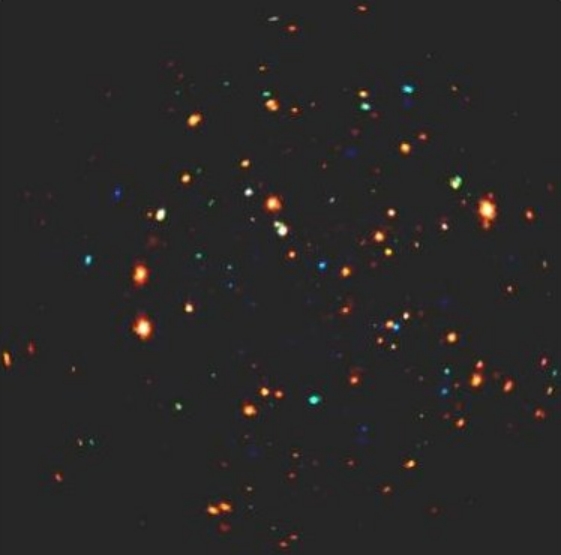
 Credit: F. Jansen & D. Lumb (ESA)
Credit: F. Jansen & D. Lumb (ESA)
Newton's Deep Field
If you stare long enough you can see some very interesting things. The
Hubble Space Telescope proved this axiom by their long exposure picture of
a single small spot in the sky. This spot is now known as the Hubble Deep
Field. The Hubble
Deep Field observation revealed some of the youngest and most active
galaxies ever seen. The Chandra
X-ray Telescope also stared at this same spot, and also identified some
very young, X-ray bright galaxies. Now XMM-Newton
has observed the deep field as well, staring at this single spot for
over 50 hours. This long exposure, shown above, allows astronomers to
localize young X-ray bright galaxies, mostly powered by supermassive black
holes. The image above is a "true-color" image in which the color of the
object shown represents the average energy of the X-ray emission produced
by the object; blue represents high-energy X-ray emission, while red
represents low-energy X-rays. In addition to identifying the X-ray
sources, astronomers can use the X-ray data from XMM-Newton to examine
whether the sources vary, or examine the X-ray spectral fingerprint of each
object to help reveal the ways the supermassive black holes produce X-rays.
Last Week *
HEA Dictionary * Archive
* Search HEAPOW
* Education
Each week the HEASARC
brings you new, exciting and beautiful images from X-ray and Gamma ray
astronomy. Check back each week and be sure to check out the HEAPOW archive!
Page Author: Dr. Michael F.
Corcoran
Last modified November 19, 2001


